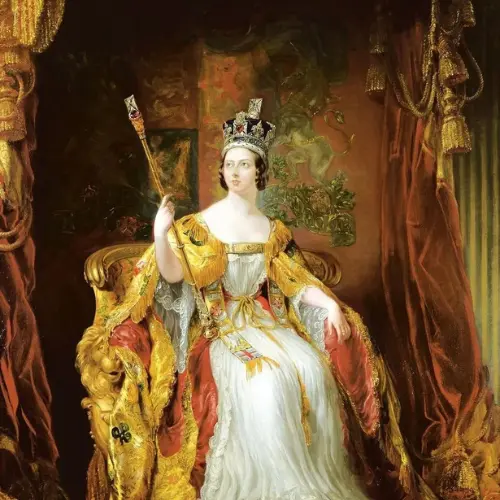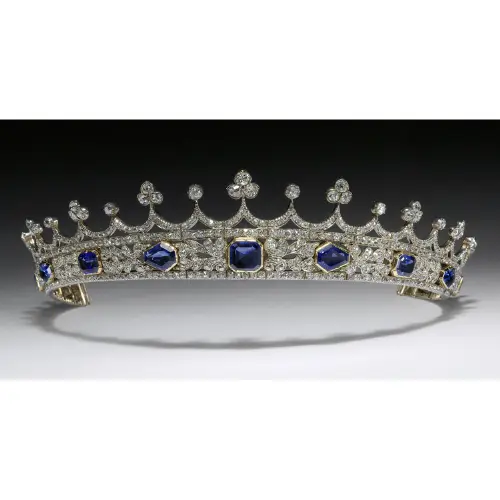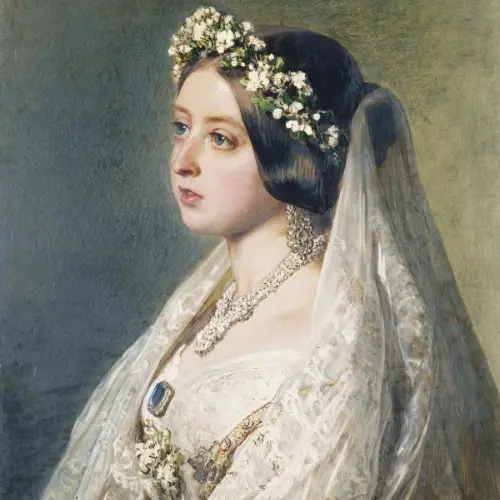
Queen Victoria, born in 1819, stands as an iconic monarch whose reign of over six decades left an indelible mark on British history. Her influence extended across the realms of economy, politics, and cultural heritage, shaping the Victorian era's character. Among the many facets of her legacy, Queen Victoria's passion for jewelry emerges as a captivating narrative, symbolizing opulence and luxury.
From a young age, Queen Victoria's fascination with jewelry burgeoned through her mother's extensive collection, inherited from Queen Charlotte. The Duchess of Kent's jewels, with roots in the royal lineage, laid the foundation for Victoria's evolving taste. As a child, she adorned herself with her mother's treasures, foreshadowing a lifelong affinity for regal adornments.
Her father, the Duke of Kent, added to her collection, surprising her with jewelry on special occasions. This early exposure profoundly influenced Queen Victoria's preferences, shaping her penchant for heavy and haute jewels. Her curated assortment included diamond and pearl pieces, vibrant gemstones like rubies, sapphires, and emeralds, and intricate cameos.
Noteworthy among her regalia is the Small Diamond Crown, designed by Rundell and Bridge for her coronation in 1838. Comprising 1,187 diamonds set in silver, it offered a lighter alternative to the State Crown, symbolizing both elegance and practicality.

The Koh-i-Noor diamond, gifted by the East India Company in 1850, found a place in a brooch Queen Victoria often wore on special occasions. Now part of the British Crown Jewels, it stands as a testament to her enduring legacy.

The Imperial State Crown, worn at her coronation, boasts over 3,000 diamonds, rubies, sapphires, and emeralds, weighing over 2 pounds. Still in use for British monarch coronations, it remains an iconic symbol of regality. Beyond grandeur, Queen Victoria embraced everyday jewelry—brooches, earrings, and necklaces—often commissioning new pieces from renowned jewelers like Garrard and Co., the official jeweler of the British royal family.

Another remarkable piece, the sapphire and diamond coronet from Prince Albert in 1840, features 11 sapphires arranged as forget-me-not flowers, emphasizing love and fidelity.

The Oriental Circlet, a blend of rubies and diamonds, gifted to Princess Royal Louise, reflects Victorian fascination with Indian and Islamic design. The Queen Victoria Ruby Crown Brooch, a radiant piece with a large cabochon-cut ruby surrounded by diamonds, symbolizes enduring love. Gifted by Prince Albert on their wedding day in 1840, it has graced subsequent generations, worn by Queen Elizabeth II.

The Queen's emerald and diamond tiara, gifted by Prince Albert, remains a prized possession, showcasing Indian-inspired craftsmanship.

The Queen Victoria Sapphire Brooch, featuring a large oval sapphire surrounded by diamonds, symbolizes enduring love. Gifted by Prince Albert in 1840, it remains a significant piece in the British royal collection, often worn by Queen Elizabeth II during state occasions.
Queen Victoria's connection with her people and her practice of incorporating personal mementos into her jewelry showcase her compassionate and caring nature. During mourning periods, she commissioned pieces incorporating locks of hair, photographs, and inscriptions, reflecting the Victorian era's fascination with death.
Her extensive jewelry collection, rooted in personal experiences and interests, has become part of the British Crown Jewels. Each piece tells a story, contributing to Queen Victoria's lasting legacy in the world of haute jewels. As her jewels passed down through generations, some were sold or privately owned, attaining status as sought-after vintage pieces.
In essence, Queen Victoria's love for jewelry transcends mere adornment—it's a narrative etched in gemstones, a testament to an era, and a legacy that continues to captivate and inspire.







